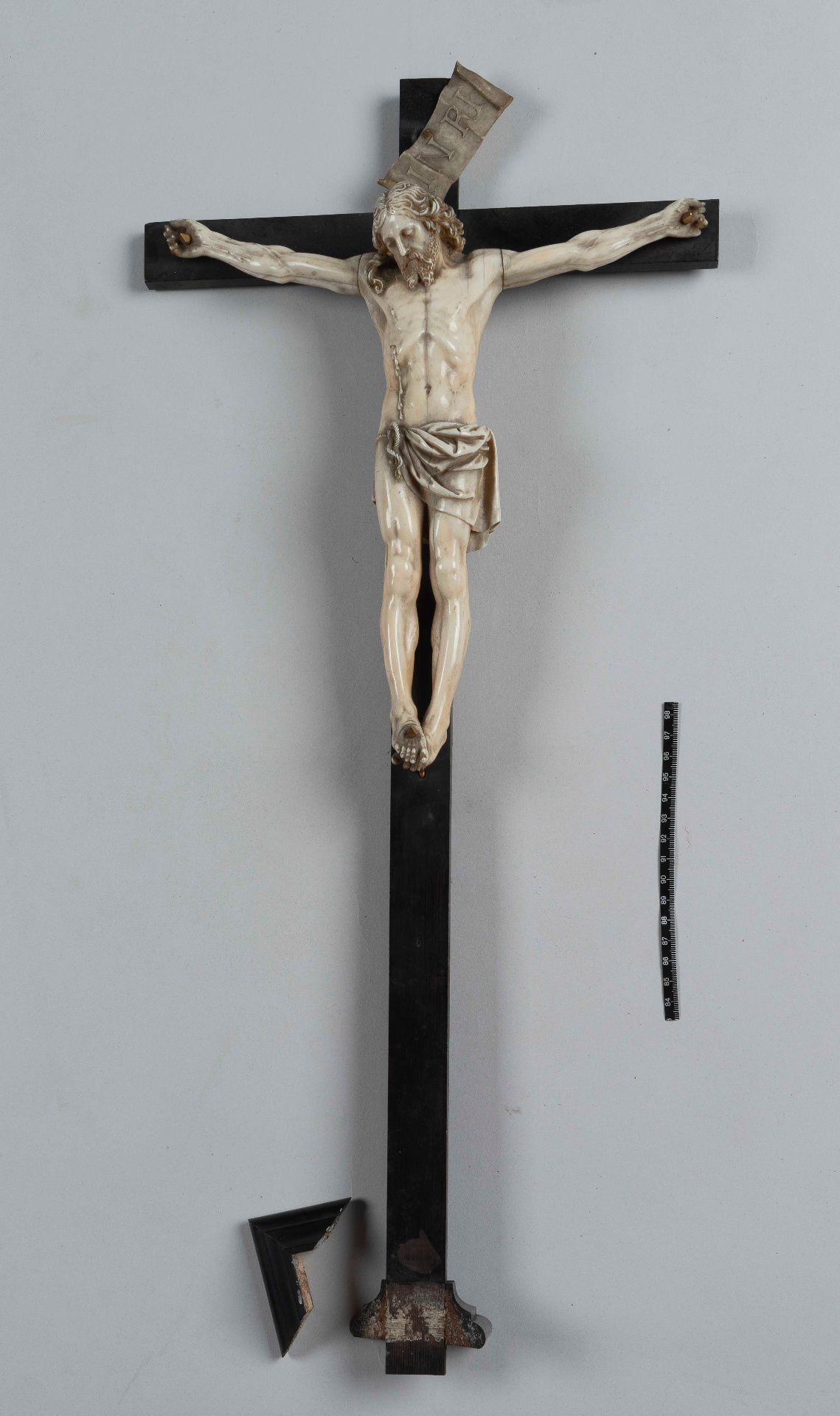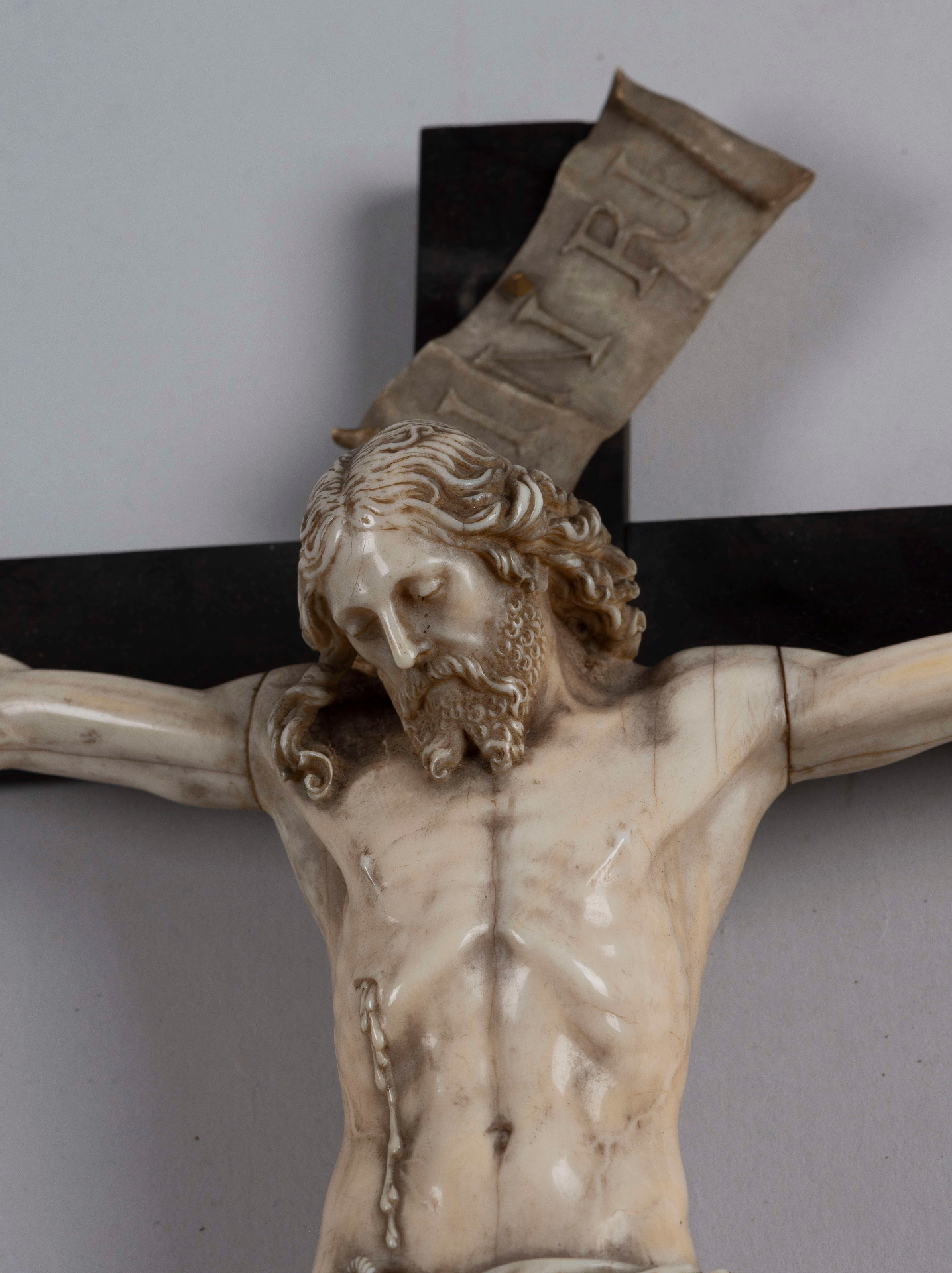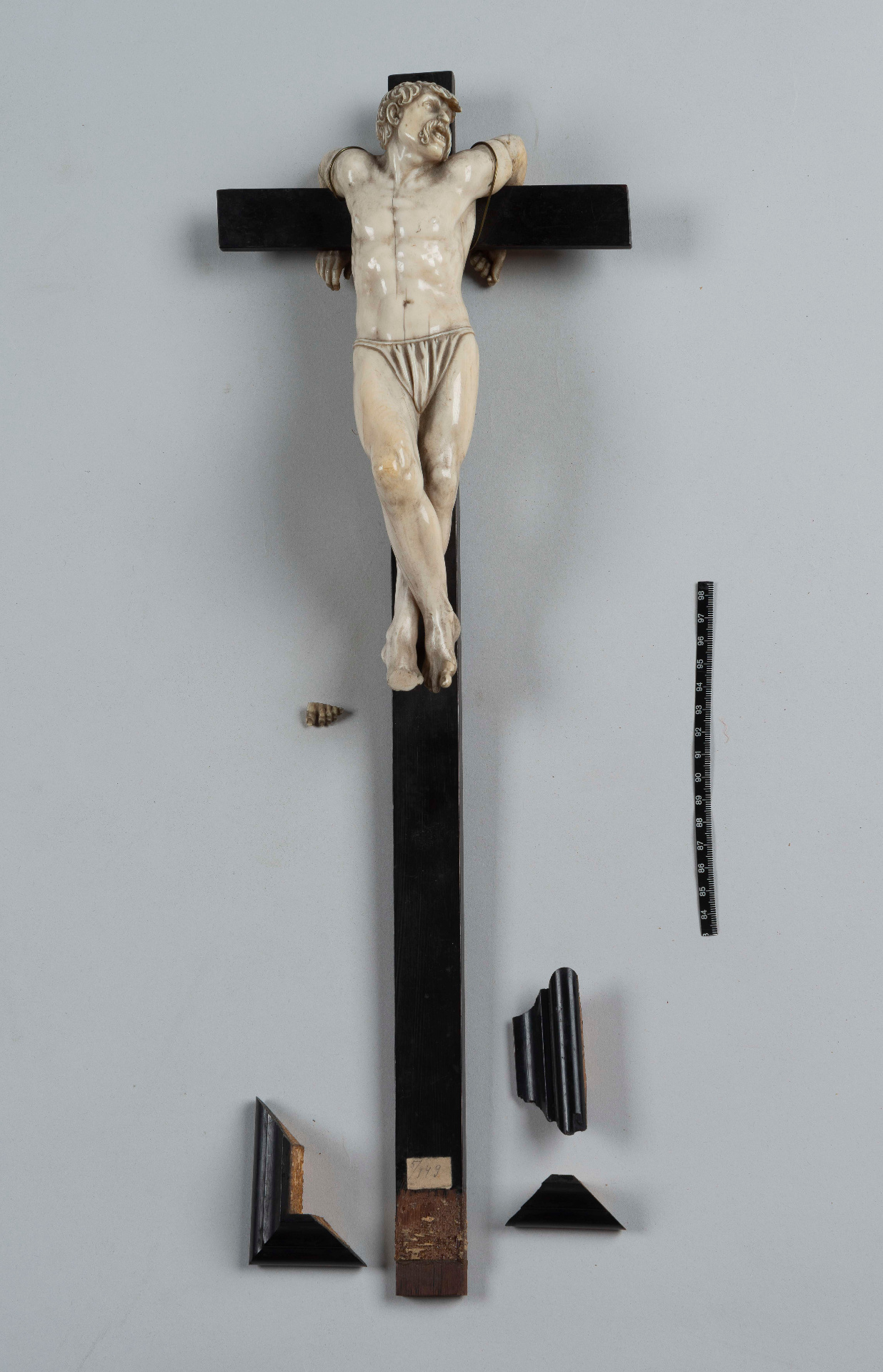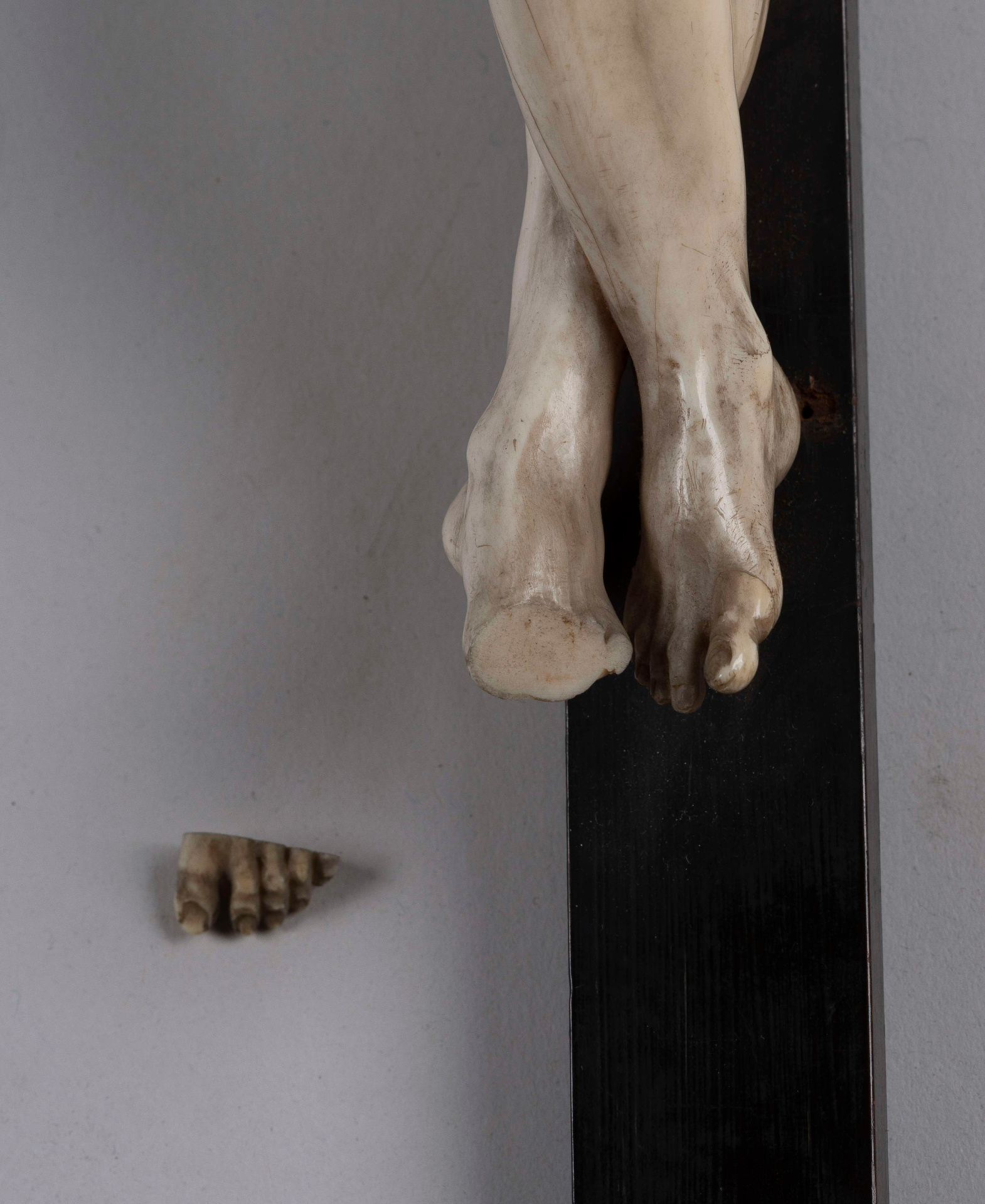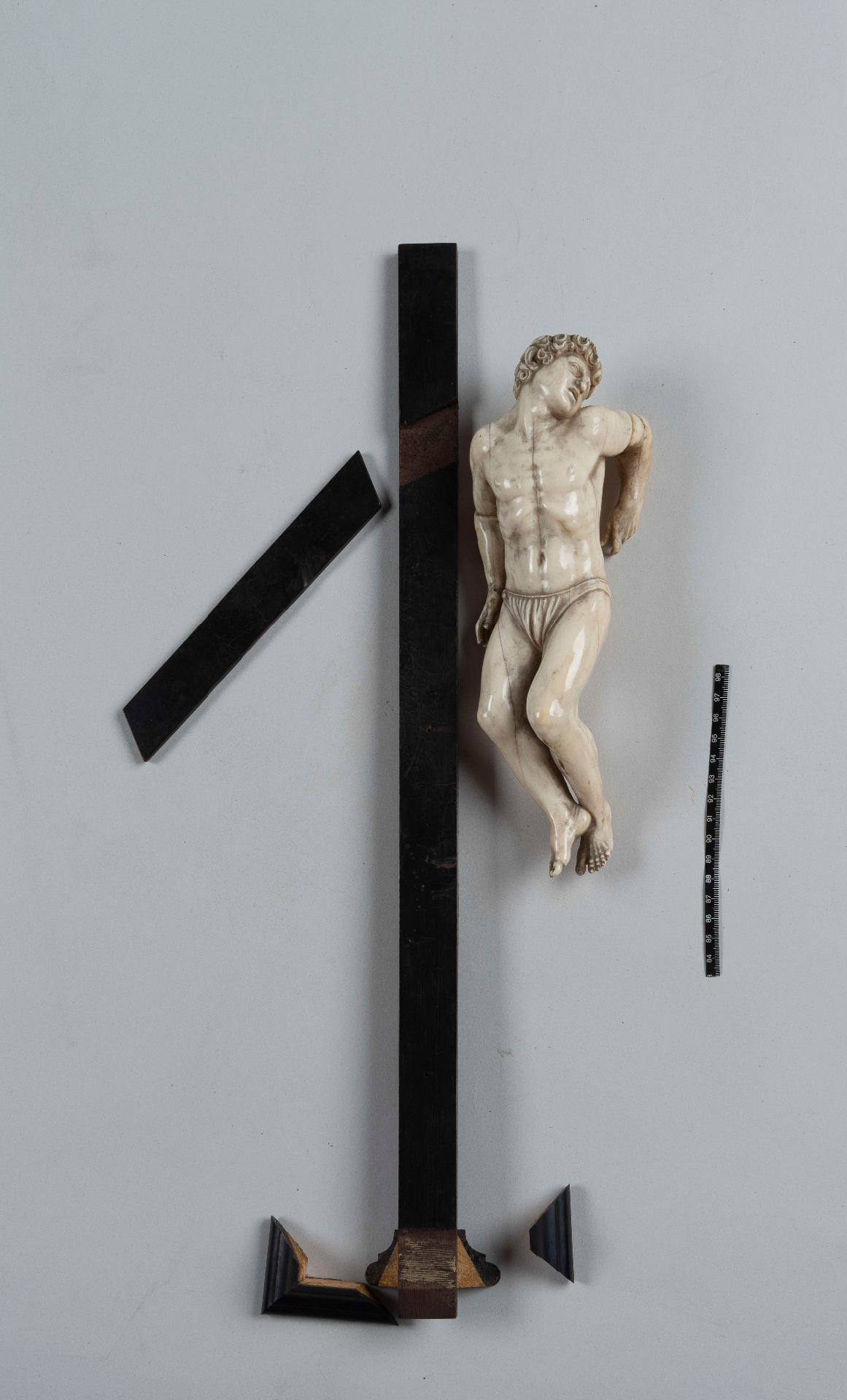Restoration of ivory sculptural composition “Crusifiction”
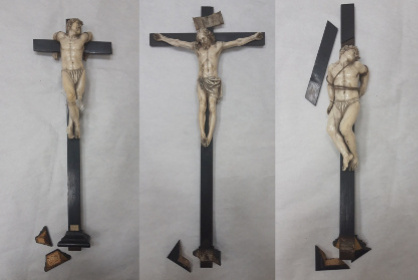 Germany, 18th century. Ivory
Germany, 18th century. IvoryThe sculptural group “Crusifixion” was produced in Germany in the 18th c. Starting from the late 16th c., it became very fashionable at the royal courts to have private curiosity chambers (Kunstkammer), and to acquire rare ivory sculptures for these collections. Many sovereigns not only bought and ordered such ivory items, but aspired to have their own court carvers; some rulers even engaged in carving themselves.
The sculptural group “Crusifixion” is a three-figured composition: the central one is Christ on the cross, and two others are side figures of thieves. Initially all three parts of the composition were mounted on a wooden base which was lost over time.
Present condition:
The exhibit needs restoration: parts of the composition are splitted, structural joints have diverged, sculptures are fragmented. Ivory has a lot of cracks, the surface is heavily contaminated.
Required restoration treatment:
- Dismantling of the weak glue joints, deleting old glue, reassembling and gluing of fragments.
- Conservation: cleaning the surface, reinforcing bone cracks, filling in losses, retouchings over mastic.
- Assembling all parts together, fixing the composition on the special made wooden base.
After the restoration, this unique object will be displayed at temporary exhibitions.
A working group of members of the State Hermitage staff has been formed for the restoration of the object:
scholarly supervisor – Elena Shlikevich, chief researcher at the Department of Western European Applied Art;
coordinator – Alexandra Davydova, Head of the Hermitage Friends’ Club;
curator – Ekaterina Mankova, Head of the Laboratory for Scientific Restoration of Objects Made of Organic Materials.
